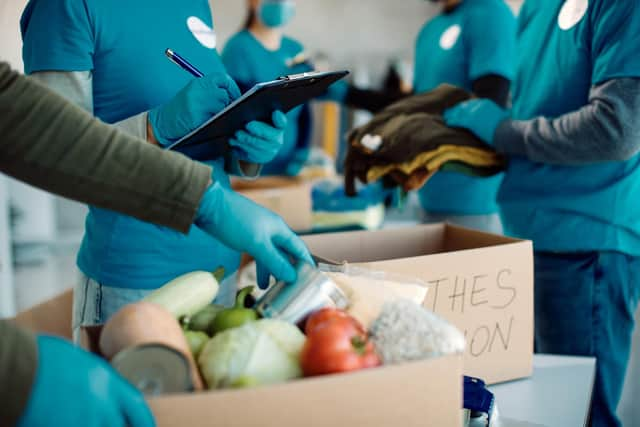Cost of living crisis: Sheffield's use of Trussell Trust food banks up by 295 per cent since pandemic
and live on Freeview channel 276
New figures released today reveal Sheffield food banks in the Trussell Trust’s network provided a total of 104,349 parcels to people facing financial hardship across the city, from 1 April 1, 2020 to March 31, 2022.
This represents a 295 per cent increase compared to the same period in 2019/20 – before the pandemic – as more and more people in Sheffield are unable to afford the absolute essentials that we all need to eat, stay warm, dry and clean.
Advertisement
Hide AdAdvertisement
Hide AdAlarmingly, 22,926 food parcels were provided for Sheffield children between April 1, 2021 to March 31, 2022; and 16,428 between April 1, 2020 to March 31, 2021, representing a huge growth of 430 per cent and 308 per cent, respectively, when compared with April 1, 2019 to March 31, 2020 when 5,331 were given out.


Food bank managers are also now warning of an accelerating crisis across the UK following the cut to Universal Credit, as the cost of living continues to soar.
Emma Revie, chief executive of the Trussell Trust, said: “People are telling us they’re skipping meals so they can feed their children. That they are turning off essential appliances so they can afford internet access for their kids to do their homework.
“How can this be right in a society like ours? And yet food banks in our network tell us this is only set to get worse as their communities are pushed deeper into financial hardship. No one’s income should fall so dangerously low that they cannot afford to stay fed, warm and dry.
POLITICS: Kate Josephs: 'It's gone on far too long' - Sheffield Council boss paid £55,100 for 100 days at home
“There is still time for the UK government to do the right thing. We are calling on the UK government to bring benefits in line with the true cost of living. As an urgent first step benefits should be increased by at least seven per cent, keeping pace with increases in the cost of living.
Advertisement
Hide AdAdvertisement
Hide Ad“In the longer term, we need the government to introduce a commitment in the benefits system to ensure that everyone has enough money in their pockets to be prevented from falling into destitution.”
Sheffield saw the biggest increase in Trussell Trust food banks in Yorkshire during the pandemic, with East Riding coming second with an 181 per cent increase, and Bradford third with a 49 per cent increase.
The Trussell Trust says food banks in its network experienced their busiest winter outside of 2020 at the height of the pandemic, providing 1.2 million parcels in the second half of the year alone (from October to the end of March). That is more parcels than were provided for the whole year of 2016/17, just five years ago.
A Government spokesperson said: “We recognise the pressures on the cost of living and we are doing what we can to help, including spending £22 billion across the next financial year to support people with energy bills and cut fuel duty.
Advertisement
Hide AdAdvertisement
Hide Ad“For the hardest hit, we’re putting an average of £1,000 more per year into the pockets of working families on Universal Credit, have also boosted the minimum wage by more than £1,000 a year for full-time workers and our Household Support Fund is there to help with the cost of everyday essentials.”
The statistics used are a measure of volume, rather than unique users.